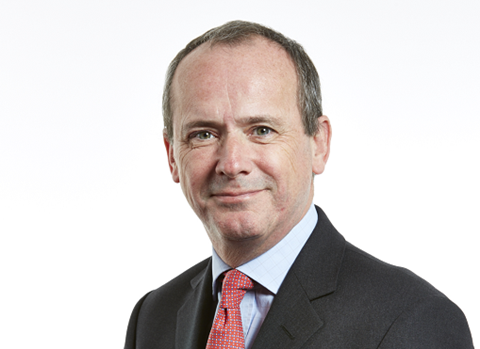Ahead of his address at March’s Multaqa Qatar, Tokio Marine Kiln’s Group Strategic Development Director talks to Global Reinsurance about innovation and the potential to disrupt the centuries old Lloyd’s market

Global Reinsurance: How would you define insurance disruption and does the industry need disrupting?
The word ‘disruption’ has negative connotations and is something many might fear. Yet, replace it with ‘innovation’, then few would argue that our industry desperately needs innovating. The question really is whether we do it ourselves or leave it to an outsider to do.
There is huge room to offer the customer wider coverage, more competitive pricing and easier access. Innovation is driven by the customer and understanding their wants and needs. It is about finding inefficiencies and addressing them to improve things, usually by using technology
Increasingly the customer has more choice, in some cases they are choosing that insurance is not relevant for them. We need to be closer to the customer and ensure we are sufficiently creative enough to respond.
Uber has disrupted the taxi business. Netflix has disrupted TV and home entertainment. Technology is changing how people buy insurance and can also be used to help keep insurers relevant to future generations. But with technology and digital solutions moving so fast, how can insurers plan for the next five years, let alone any further?
Planning ahead is not a problem provided we respond to customer demands and be on the front foot in offering them more. The problem for established insurers is that we have legacy, we carry the weight of past costs which new entrants don’t have. But this is also an advantage giving us experience and a degree of knowledge on what works and what doesn’t.
What disruptors have transformed insurance so far and what will transform insurance in the future?
The big disruptor in the past couple of decades has been the internet which has changed buying patterns in the consumer market and almost eradicated brokers in that sector in a number of countries. Online aggregators have provided consumers with vastly improved access to a wider range of insurance products, delivered 24/7 in a simple, easy-to-use way.
The change we are working with now, in all insurance fields, is big data. The level of information we have access to now allow insurers to model large volumes of data so underwriters can more accurately price and select risks at a portfolio level. Business can be written and claims settled with less human intervention as machines do the job quicker, cheaper and with greater consistency
Looking further in to the future there is opportunity for innovation at every stage of the insurance process: from how buyers access products; the information they need to provide; the style of contract they are given and the way in which their claim is settled.
What do you see as the biggest barriers to disruption in the global speciality insurance industry?
The greatest barrier in speciality insurance is that it is a heavily regulated industry. Before you even get started as an insurer you need to meet capital requirements, comply with Solvency II or its equivalent and hire the necessary actuarial and compliance professionals to do this. These are very expensive barriers to entry and disrupters would have to be sure of their business model before making this investment. That said, it has not prevented pension and hedge funds from taking big shares in the catastrophe reinsurance market so the warning signs are there.
In contrast, the barriers to entry are considerably lower on the brokerage side of the market. In many industries technology has eradicated the middle man, the challenge now is for brokers to prove their value to their customers.
Many look at start-ups/outside entities as potential industry disruptors, but what can the industry do to lead the disruption?
Disruption isn’t an ‘us versus them’ thing. We have the experience, expertise and regulatory approval so we should work with new start-ups and innovators outside the industry to see if they can bring viable change. The one thing that we haven’t seen much of is transformational acquisitions where players move vertically into distribution or capital provision. The recent spate of transactions in the market have been about increasing scale rather than buying ideas – this could change though.
In terms of the industry leading innovation I would say it is already happening. In London, Lloyd’s is spearheading an innovation push. This is a market wide thing, we are all coming together to improve things and stay ahead rather than each company trying to individually disrupt it.
How easy will it be to disrupt the centuries old Lloyd’s market?
Lloyd’s isn’t an easy part of the insurance market to disrupt because of its concentration of talent and renowned expertise in specialist insurance. One of the greatest strengths of Lloyd’s is its extensive distribution network, licenses and its position as a global meeting ground for all elements of the insurance industry. Nevertheless there are obvious vulnerabilities: There are too many archaic processes in the market and the cost of doing business is way too high. Lloyd’s is riper for reform rather than disruption - outsiders would have a formidable challenge creating anything better.
Multaqa Qatar is the MENA region’s leading risk and insurance event co-hosted by the Qatar Central Bank and the Qatar Financial Centre Authority and organised by Global Reinsurance. Now in its tenth year, the three-day gathering takes place in Doha from March 13-15. To attend, visit www.multaqa.com.qa







No comments yet